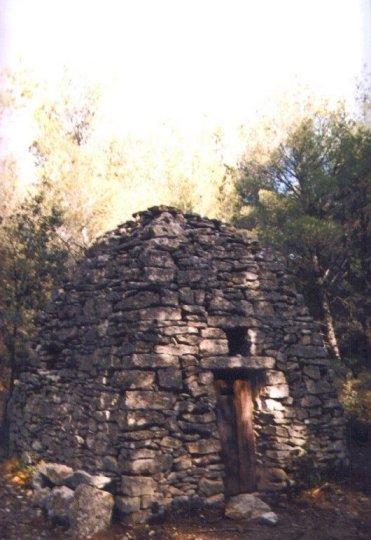
Washing Fountain
![[Previous]](../../../common/previous.gif)
![[Next]](../../../common/next.gif)

Washing Fountain
Our final lunch was in the village of Cabrières-d'Avignon. It hardly seemed possible that we had spent five days walking through Provence.
Like many of the villages that we visited, Cabrières-d'Avignon had a central fountain. Around the fountain was constructed a washing area. The washing area had sloped stone enclosures. The entire area was often covered with a roof, providing shade in the summer and protection in the winter. The slope was towards an inner pool. Clothes would be dipped in the pool then rubbed on the stone with soap to wash them. The clothes would then be dipped in the pool again to rinse off the soap.

Bories
Throughout our tour, we encountered stone huts that are called Bories. Bories have existed for hundreds of years. Many were used for temporary shelter, sheep pens, or to store tools, but some were inhabited during different periods. Bories are constructed using local materials. No mortar is used -- the builders carefully stacked the stones, overlapping them so that they eventually meet to form the roof. The stones are slightly inclined so that water will not penetrate into the hut.
The Bories we saw were of different sizes and shapes. Some were round, ovoid, square, or rectangular. The simpliest ones could hold two or three sheep and the larger ones looked like they could house a family. Some Bories had a chimney and one that we visited appeared to have had a recent fire lit inside.